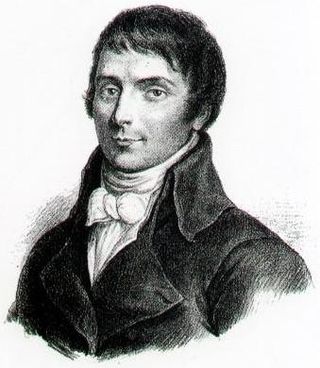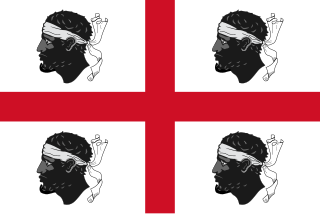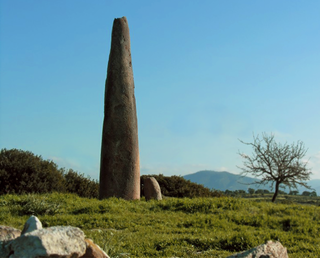
Ajaccio is a French commune, prefecture of the department of Corse-du-Sud, and head office of the Collectivité territoriale de Corse. It is also the largest settlement on the island. Ajaccio is located on the west coast of the island of Corsica, 210 nautical miles (390 km) southeast of Marseille.

Sardinia is the second-largest island in the Mediterranean Sea, after Sicily, and one of the 20 regions of Italy. It is located west of the Italian Peninsula, north of Tunisia and immediately south of the French island of Corsica.

Cagliari is an Italian municipality and the capital of the island of Sardinia, an autonomous region of Italy. It has about 155,000 inhabitants, while its metropolitan city has about 420,000 inhabitants. According to Eurostat, the population of the Functional urban area, the commuting zone of Cagliari, rises to 476,975. Cagliari is the 26th largest city in Italy and the largest city on the island of Sardinia.

Calvi is a commune in the Haute-Corse department of France on the island of Corsica.

Édouard de Niéport, usually known as Édouard Nieuport (1875–1911) was the co-founder with his brother Charles of the eponymous Nieuport aircraft manufacturing company, Société Anonyme Des Établissements Nieuport, formed in 1909 at Issy-les-Moulineaux. An engineer and sportsman, Édouard was also one of the pre-eminent aeroplane designers and pilots of the early aviation era . As a pilot, he set a new world speed record of 74.37 miles per hour (119.69 km/h) on 11 May 1911 at Mourmelon, flying his Nieuport II monoplane, powered by a 28 horsepower (21 kW) engine of his own design. Later that year at Châlons, he bettered this time with a new record of 82.73 miles per hour (133.14 km/h). Racing for the Gordon Bennett Trophy in July at Eastchurch, he finished third, beaten for first place by one of his own aircraft, flown by the American pilot C. T. Weymann.

Société nationale maritime Corse-Méditerranée (SNCM) was a French ferry company operating in the Mediterranean.

Giovanni Maria Angioy was a Sardinian politician and patriot and is considered to be a national hero by Sardinian nationalists. Although best known for his political activities, Angioy was a university lecturer, a judge for the Reale Udienza, an entrepreneur and a banker.

The Republic of Pisa was an independent state existing from the 11th to the 15th century and centered on the Tuscan city of Pisa. It rose to become an economic powerhouse, a commercial center whose merchants dominated Mediterranean and Italian trade for a century, before being surpassed and superseded by the Republic of Genoa.

Corsica is an island in the Mediterranean Sea and one of the 18 regions of France. It is the fourth-largest island in the Mediterranean and lies southeast of the French mainland, west of the Italian Peninsula and immediately north of the Italian island of Sardinia, which is the land mass nearest to it. A single chain of mountains makes up two-thirds of the island. As of January 2023, it had a population of 351,255.

European route E25 is a north–south European route from Hook of Holland in the Netherlands, to Palermo in Italy which includes ferry crossings from Genoa to Bastia (Corsica), from Bonifacio to Porto Torres (Sardinia) and from Cagliari to Palermo (Sicily).

Corsica Ferries - Sardinia Ferries is a Franco-Italian ferry company that operates traffic to and from the islands of Corsica, Sardinia and Elba.

Algajola is a commune in the Haute-Corse department of France on the island of Corsica.

Corsica wine is wine made on the Mediterranean island of Corsica. Located 90 km west of Italy, 170 km southeast of France and 11 km north of the island of Sardinia, the island is a territorial collectivity of France, but many of the region's winemaking traditions and its grape varieties are Italian in origin. The region's viticultural history can be traced to the island's settlement by Phoceans traders in 570 BC in what is now the commune of Aléria. In the 18th century, the island came under the control of France. Following the independence of Algeria from French rule, many Algerian Pieds-Noirs immigrated to Corsica and began planting vineyards. Between 1960 and 1976 the vineyard area in Corsica increased fourfold. In 1968, Patrimonio was established as Corsica's first Appellation d'origine contrôlée (AOC). Today, Corsica has nine AOC regions including the island-wide designation Vin de Corse AOC. The majority of the wine exported from Corsica falls under the Vin de pays designation Vin de Pays de l'Île de Beauté. The three leading grape varieties of the region are Nielluccio (Sangiovese), known as the spice wine of France, Sciacarello and Vermentino.

The Kingdom of Sardinia, also referred to as the Kingdom ofSardinia-Piedmont or Piedmont-Sardinia as a composite state during the Savoyard period, was a country in Southern Europe from the late 13th until the mid 19th century.

The Dixmude was a Zeppelin airship built for the Imperial German Navy as L 72 and unfinished at the end of the First World War, when it was given to France as war reparations and recommissioned in French Navy service and renamed Dixmude. It was lost when it exploded in mid-air on 21 December 1923 off the coast of Sicily, killing all 52 on board. This was one of the first of the great airship disasters, preceded by the crash of the British R38 in 1921 and the US airship Roma in 1922, and followed by the destruction of the USS Shenandoah in 1925 the British R101 in 1930, the USS Akron in 1933 and the German Hindenburg in 1937.

The siege of Calvi was a combined British and Corsican military operation during the Invasion of Corsica in the early stages of the French Revolutionary Wars. The Corsican people had risen up against the French garrison of the island in 1793, and sought support from the British Royal Navy's Mediterranean Fleet under Lord Hood. Hood's fleet was delayed by the Siege of Toulon, but in February 1794 supplied a small expeditionary force which successfully defeated the French garrison of San Fiorenzo and then a larger force which besieged the town of Bastia. The British force, now led by General Charles Stuart, then turned their attention to the fortress of Calvi, the only remaining French-held fortress in Corsica.

The Pre-Nuragic period refers to the prehistory of Sardinia from the Paleolithic until the middle Bronze Age, when the Nuragic civilization flourished on the island.

The invasion of Corsica was a campaign fought in the spring and summer of 1794 by combined British military and Corsican irregular forces against a French garrison, early in the French Revolutionary Wars. The campaign centred on sieges of three principal towns in Northern Corsica; San Fiorenzo, Bastia and Calvi, which were in turn surrounded, besieged and bombarded until by August 1794 French forces had been driven from the island entirely.

The action of 22 October 1793 was a minor naval engagement fought in the Mediterranean Sea during the War of the First Coalition, early in the French Revolutionary Wars. During the engagement a lone British Royal Navy ship of the line, the 64-gun HMS Agamemnon, attacked the French Navy large frigate Melpomène, part of a larger squadron, off the coast of Sardinia. Although Agamemnon chased Melpomène some distance through the night and inflicted significant damage, the French frigate was able to escape following the arrival of the rest of its squadron under Commodore Jean-Baptiste Perrée. The French ships later anchored in Corsican harbours to land reinforcements for the French garrison on the island, where the population was in open revolt.

The French expedition to Sardinia was a short military campaign fought in 1793 in the Mediterranean Sea in the first year of the War of the First Coalition, during the French Revolutionary Wars. The operation was the first offensive by the new French Republic in the Mediterranean during the conflict, and was directed at the island of Sardinia, part of the Kingdom of Sardinia. Sardinia was neutral at the time, but immediately joined the anti-French coalition. The operation was a failure, with attacks directed at Cagliari in the south and La Maddalena in the north both ending in defeat.




















